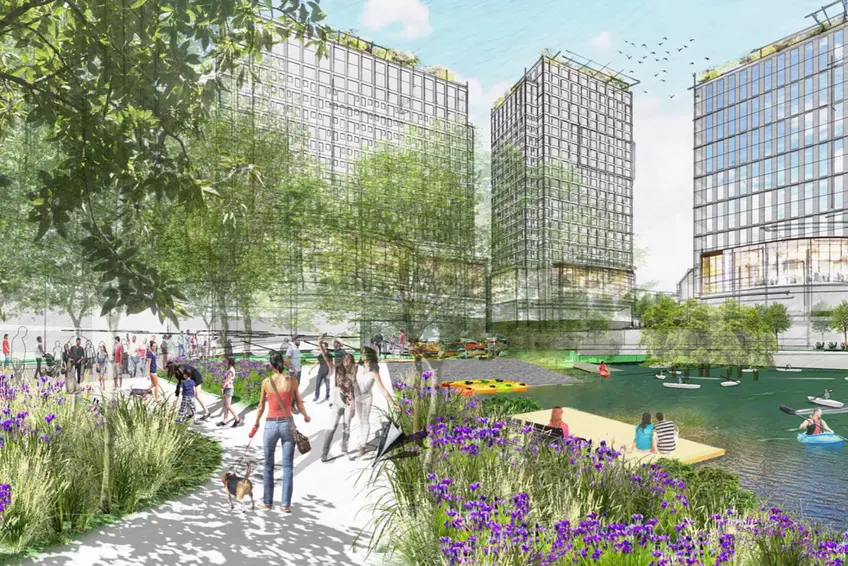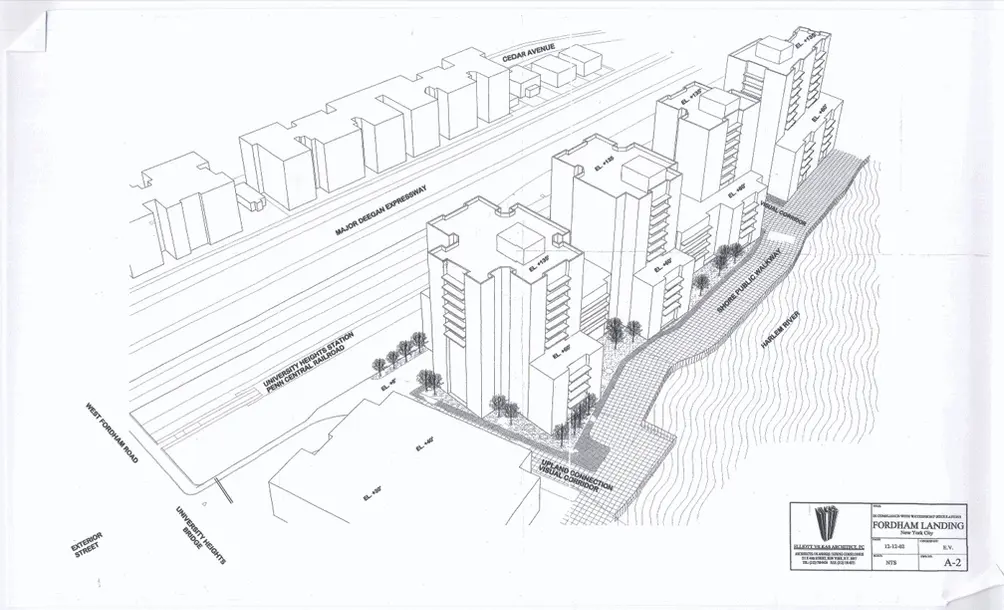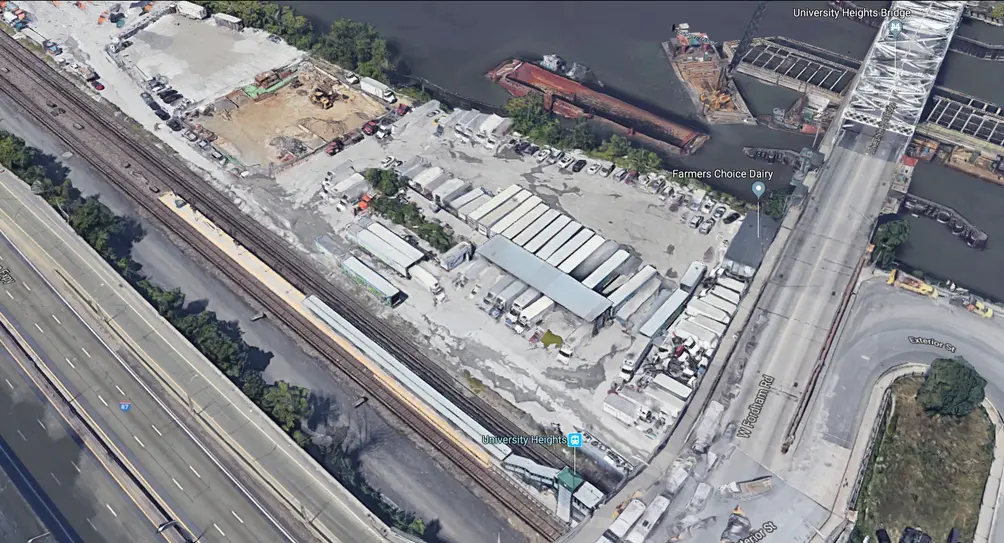 Preliminary renderings of Fordham Landing - Dynamic Star LLC
Preliminary renderings of Fordham Landing - Dynamic Star LLC
Yesterday, developer Dynamic Sar announced the appointment of Meridian Capital Group to obtain equity and debt for Fordham Landing, a $3.5 billion mixed-use development on the Harlem River waterfront. The ambitious project will span 40 acres in the Bronx’s University Heights neighborhood, representing the largest water-adjacent land assemblage by any private developer in the city.
The complex, anchored along a new riverfront esplanade, will supply 2,380 apartments (of which 720 will be affordable), as well as offices, retail, student housing, a public school, a life sciences research center, an e-sports arena, a kaak launch, and public facilities aimed to serve the community at large. The development also envisions enlarging and expanding the adjacent Metro North - University Heights station, which offers direct access to the Grand Central Terminal. Just as importantly, the development will reconnect the existing neighborhood to the waterfront, which has long since been severed from the community by the 140-foot-wide Major Deegan Expressway, the open-cut Metro North track, and marginally-used industrial land at the river’s edge.
Project planning appears to be in capable hands, since Dynamic Star has recruited Penny Lee, a veteran of the city’s Planning Department, as the company’s Director of Planning. Lee, whose credentials include the conversion of a Queens Plaza parking lot into Dutch Kills Green, a pivotal green space in Long Island City, appears equally confident about the Bronx development.
"We have carefully planned the components of the new Fordham Landing to complement and supplement the surrounding community, while creating a vibrant new economic center for The Bronx," Lee states in the press release. "For example, 30% of the apartments will be affordable housing, shopping will be available onsite, and the life sciences research center will fit well in a community that is heavily populated by academics."
Prior announcements earlier this year revealed NADAAA and Perkins Eastman as project architects and Margie Ruddick Landscape as designers for the 12.5 acres of outdoor space. Whether or not the architect team will remain with the project or new partners will enter into the collaboration, it is a near-certainty that the final product will look rather different and more refined than the generic placenholder images released so far in conceptual renderings. However, the content is sufficient to give us an idea of the ambitious scale of the undertaking.
The complex, anchored along a new riverfront esplanade, will supply 2,380 apartments (of which 720 will be affordable), as well as offices, retail, student housing, a public school, a life sciences research center, an e-sports arena, a kaak launch, and public facilities aimed to serve the community at large. The development also envisions enlarging and expanding the adjacent Metro North - University Heights station, which offers direct access to the Grand Central Terminal. Just as importantly, the development will reconnect the existing neighborhood to the waterfront, which has long since been severed from the community by the 140-foot-wide Major Deegan Expressway, the open-cut Metro North track, and marginally-used industrial land at the river’s edge.
Project planning appears to be in capable hands, since Dynamic Star has recruited Penny Lee, a veteran of the city’s Planning Department, as the company’s Director of Planning. Lee, whose credentials include the conversion of a Queens Plaza parking lot into Dutch Kills Green, a pivotal green space in Long Island City, appears equally confident about the Bronx development.
"We have carefully planned the components of the new Fordham Landing to complement and supplement the surrounding community, while creating a vibrant new economic center for The Bronx," Lee states in the press release. "For example, 30% of the apartments will be affordable housing, shopping will be available onsite, and the life sciences research center will fit well in a community that is heavily populated by academics."
Prior announcements earlier this year revealed NADAAA and Perkins Eastman as project architects and Margie Ruddick Landscape as designers for the 12.5 acres of outdoor space. Whether or not the architect team will remain with the project or new partners will enter into the collaboration, it is a near-certainty that the final product will look rather different and more refined than the generic placenholder images released so far in conceptual renderings. However, the content is sufficient to give us an idea of the ambitious scale of the undertaking.
 Preliminary renderings of Fordham Landing
Preliminary renderings of Fordham Landing
 (Greenberg Farrow)
(Greenberg Farrow)
 (AB Moten Corporation)
(AB Moten Corporation)
 Google Street view aerial map of the site circa September 2018
Google Street view aerial map of the site circa September 2018


 6sqft delivers the latest on real estate, architecture, and design, straight from New York City.
6sqft delivers the latest on real estate, architecture, and design, straight from New York City.
